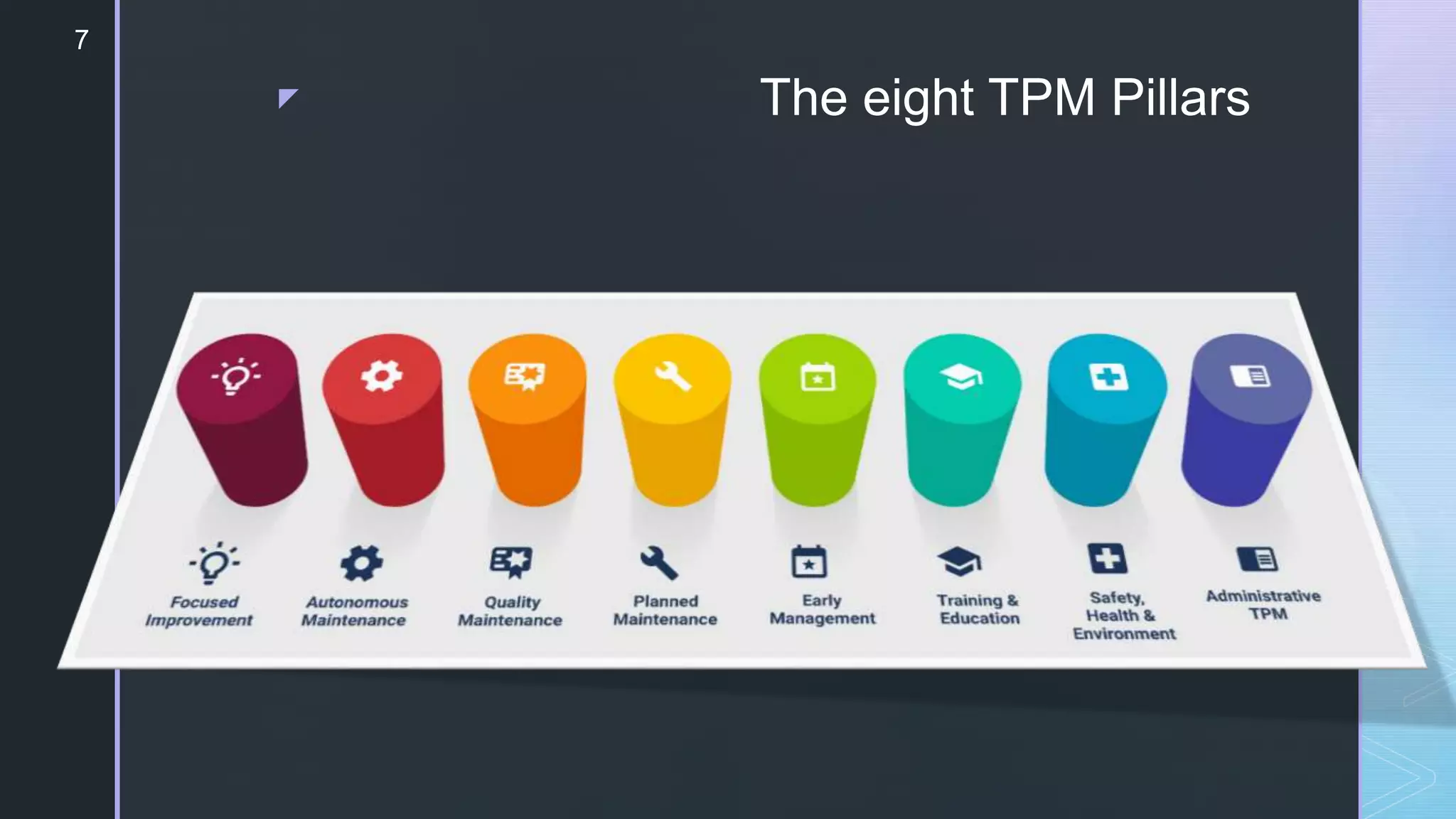This document provides an introduction to Total Productive Maintenance (TPM). It discusses the evolution of maintenance approaches from breakdown maintenance to TPM. TPM is defined as a holistic approach that integrates maintenance into the manufacturing process to reduce waste and eliminate small stops and breakdowns. The goals of TPM are outlined as perfect production through eliminating equipment breakdowns, defects, small stops, safety issues, and environmental issues. Reasons for implementing TPM include reducing costs and waste, empowering workers, increasing productivity, and taking a proactive approach to quality. The eight pillars of TPM are identified. Focused improvement, one of the pillars, encourages continuous improvement through activities like root cause analysis and quality management matrices.







